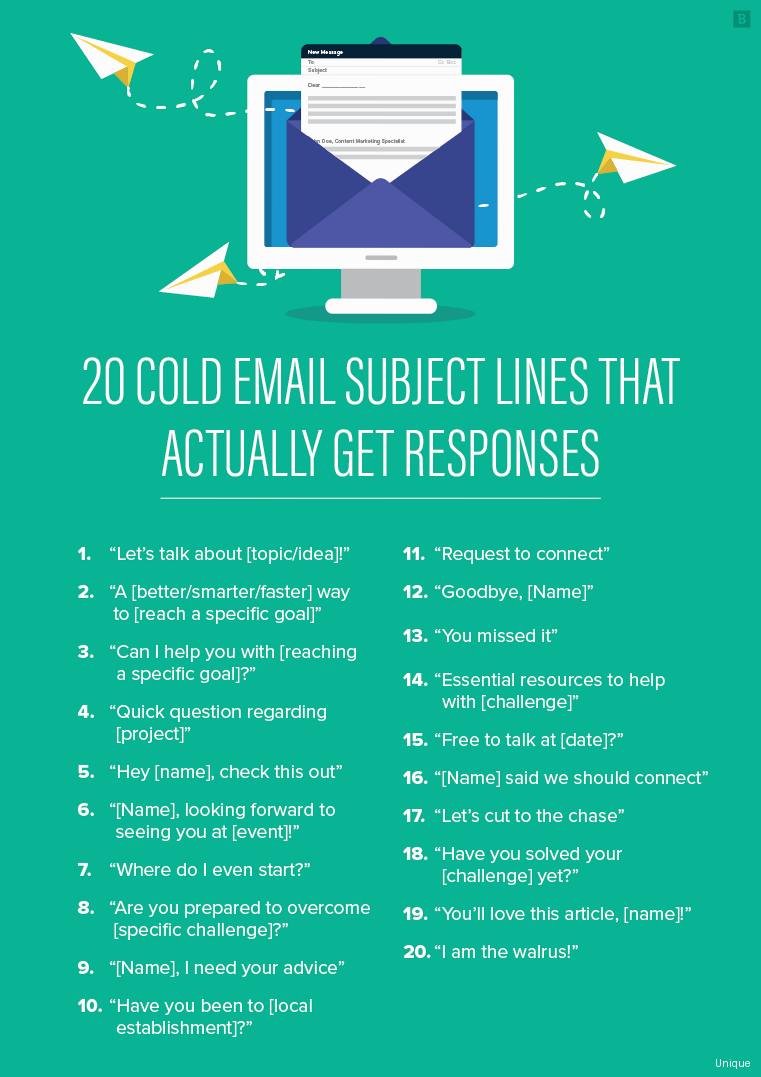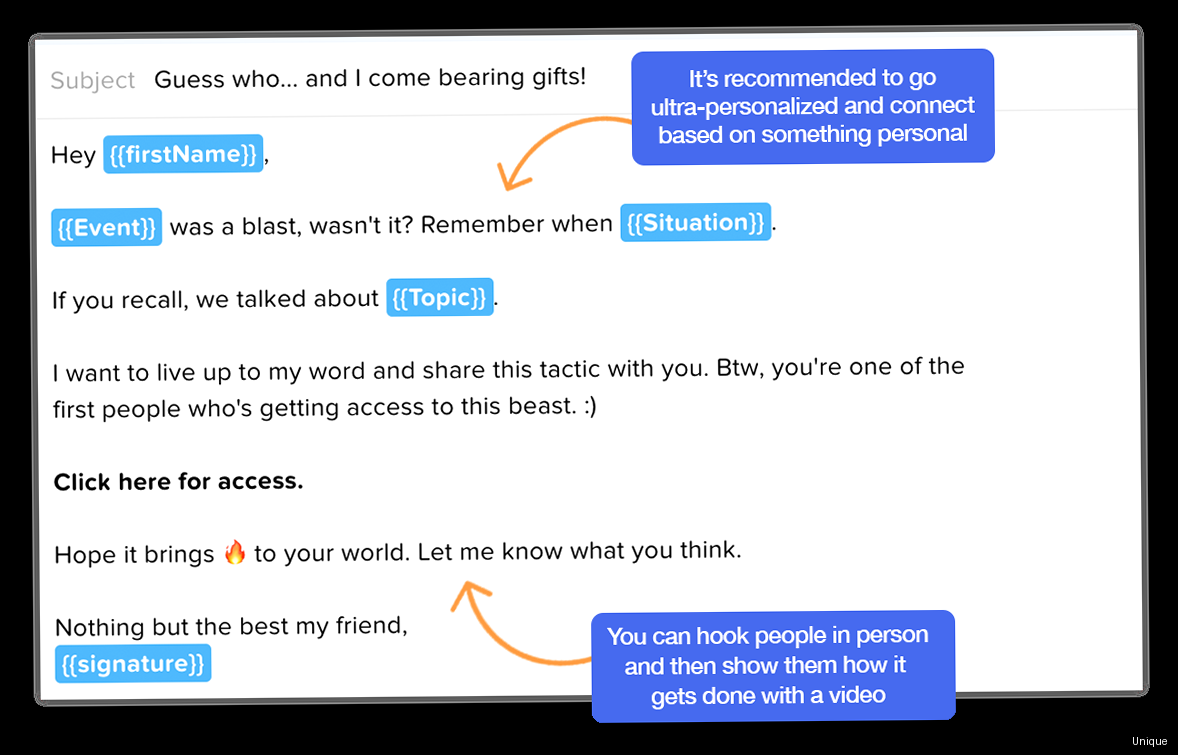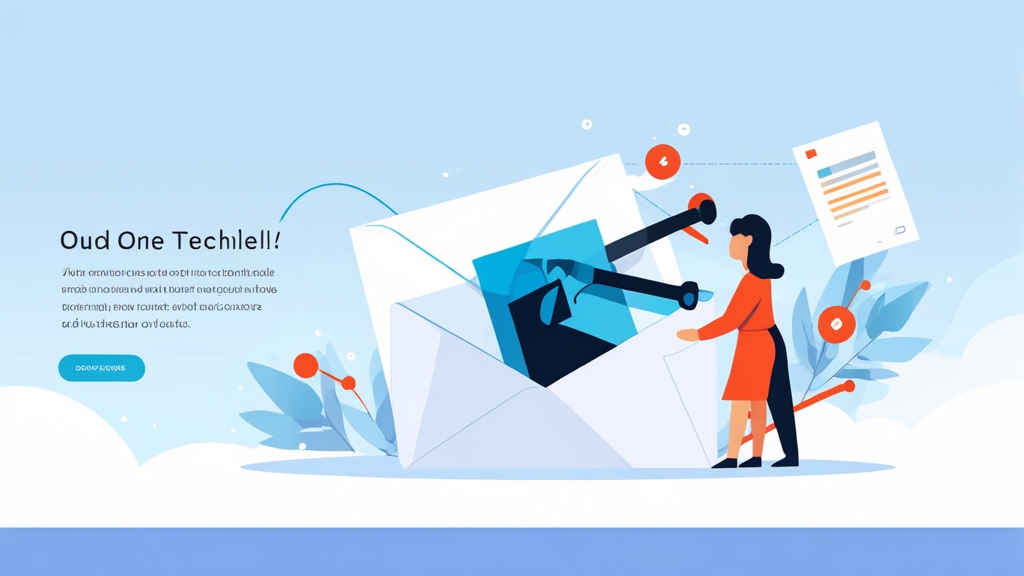Crafting Irresistible Subject Lines for Cold Emails: A Practical Guide
The subject line of your cold email is the gatekeeper. It’s the first (and often only) impression you make. A compelling subject line can drastically improve your open rates, leading to more opportunities and conversions. This guide provides actionable strategies and real-world examples to help you write subject lines that cut through the noise and grab your recipient’s attention.
- Understanding Your Audience: The Key to Relevant Subject Lines
- The Power of Personalization: Tailoring Subject Lines for Maximum Impact
- Creating Urgency and Curiosity: Techniques to Drive Opens
- Avoiding Spam Triggers: Ensuring Your Email Reaches the Inbox
- Testing and Optimization: Refining Your Subject Lines for Continuous Improvement
Understanding Your Audience: The Key to Relevant Subject Lines

Research and Data Collection
Begin by gathering as much information as possible about your target audience. This might involve reviewing their company website, LinkedIn profiles, industry publications, and social media activity. Look for common threads, recurring themes, and expressed needs. Identify their industry, role, company size, and any specific challenges they might be facing. Next, create detailed buyer personas. These are semi-fictional representations of your ideal customer based on research and data about your existing customers and prospects. Personas typically include demographics, job titles, responsibilities, goals, challenges, and common objections. Having well-defined personas will guide your subject line creation process. For example, if you’re targeting marketing managers in the SaaS industry, you might research common challenges they face, such as lead generation, customer acquisition cost, and marketing automation. This information can then inform your subject lines.Tailoring Your Language
Once you have a solid understanding of your audience, you can begin tailoring your language to match their preferences. This involves using industry-specific jargon, addressing their specific pain points, and framing your offer in a way that aligns with their goals. Avoid using overly generic or salesy language. Instead, focus on being clear, concise, and relevant. Use language that is natural and conversational, as if you were speaking to them directly. Example 1:// Generic Subject Line:
Check out our amazing new product!
// Targeted Subject Line (for Marketing Managers in SaaS):
Struggling with lead gen? [Your Company] helps reduce CAC by 30%
// Untargeted:
Improve Your Business Today!
// Targeted (for e-commerce store owners):
Boost Holiday Sales: 3 Quick Wins for Your E-Commerce Store
// Untargeted:
New Software Solution
// Targeted (for HR Managers):
Reduce Employee Turnover with Data-Driven Insights
Considering Industry Trends
Pay attention to current industry trends and news. Incorporating these into your subject lines can make your emails seem more timely and relevant. This demonstrates that you’re aware of the challenges and opportunities facing your audience. Example: If there’s a recent article about a new regulation affecting a specific industry, you could use a subject line like: “Navigating [New Regulation]: How [Your Company] Can Help.” This shows that you’re aware of the issue and have a solution to offer. By thoroughly understanding your audience, you can craft subject lines that are relevant, engaging, and more likely to be opened. This is the crucial first step in any successful cold email campaign.The Power of Personalization: Tailoring Subject Lines for Maximum Impact

Using Dynamic Insertion
Most email marketing platforms allow you to use dynamic insertion to personalize subject lines. This involves inserting specific information about the recipient, such as their company name, industry, or job title. This can be done using merge tags or custom fields. Example:Subject: [Company Name] - Struggling with [Specific Challenge]?
Referencing Specific Information
Another effective personalization technique is to reference specific information you’ve gathered about the recipient. This could be a recent blog post they wrote, a project they worked on, or a mutual connection you share. Example:Subject: Saw your article on [Topic] - Great insights!
Segmenting Your Audience
To effectively personalize your subject lines, you need to segment your audience into smaller, more targeted groups. This allows you to tailor your messaging to the specific needs and interests of each segment. Example: You might segment your audience by industry, company size, job title, or specific pain point. For each segment, create a set of subject lines that are highly relevant to their unique characteristics. Segmentation Example:- Segment 1: Marketing Managers in the SaaS industry
- Segment 2: Sales Directors in the Finance industry
- Segment 3: CEOs of small businesses
Creating Urgency and Curiosity: Techniques to Drive Opens
While relevance and personalization are crucial, creating a sense of urgency and curiosity can be highly effective in driving opens. Urgency motivates recipients to act quickly, while curiosity piques their interest and compels them to learn more. However, it’s essential to use these techniques ethically and avoid being manipulative or misleading. False urgency can damage your credibility.Using Time-Sensitive Language
One way to create urgency is to use time-sensitive language in your subject lines. This could involve mentioning a deadline, a limited-time offer, or an upcoming event. Example:Subject: Last chance to register for [Event]!
Posing Intriguing Questions
Asking intriguing questions in your subject lines can pique the recipient’s curiosity and encourage them to open the email to find the answer. The question should be relevant to their interests and offer a potential benefit. Example:Subject: What if you could double your leads in 30 days?
Creating a Sense of Scarcity
Highlighting scarcity can also create urgency. This could involve mentioning limited availability, limited resources, or a limited number of spots. Example:Subject: Only 5 spots left for our exclusive workshop!
Avoiding Spam Triggers: Ensuring Your Email Reaches the Inbox
Even the most compelling subject line is useless if your email ends up in the spam folder. Email providers use sophisticated spam filters to protect their users from unwanted and potentially harmful messages. Understanding and avoiding common spam triggers is crucial for ensuring your emails reach the intended recipient’s inbox. Many factors contribute to whether an email is marked as spam, including the sender’s reputation, the email content, and the subject line.Common Spam Trigger Words
Certain words and phrases are commonly associated with spam and can trigger spam filters. While the exact list varies depending on the email provider, here are some general categories and examples of words to avoid:- Financial: “Free”, “Discount”, “Price”, “Investment”, “Loan”, “Mortgage”, “Cash”, “Money”, “Earn”, “Profit”, “Credit”, “Debt”, “Billion”, “Million”
- Salesy: “Buy”, “Order”, “Shop”, “Purchase”, “Best Price”, “Limited Time Offer”, “Act Now”, “Click Here”, “Amazing”, “Incredible”, “Guaranteed”
- Deceptive: “Urgent”, “Important”, “Secret”, “Confidential”, “As Seen On”, “Once in a lifetime”, “You are a winner!”
- Health-related (often associated with scams): “Weight Loss”, “Diet”, “Medicine”, “Cure”, “Detox”
- Other: Excessive use of exclamation points (!!!!!), ALL CAPS, or special characters ($$$).
Optimizing Email Authentication
Email authentication protocols like SPF (Sender Policy Framework), DKIM (DomainKeys Identified Mail), and DMARC (Domain-based Message Authentication, Reporting & Conformance) help verify that your emails are actually coming from the domain they claim to be from. Properly configuring these records significantly improves your sender reputation and reduces the likelihood of your emails being marked as spam. SPF: Specifies which mail servers are authorized to send emails on behalf of your domain. This prevents spammers from forging your email address. DKIM: Adds a digital signature to your emails, allowing recipients to verify that the email hasn’t been tampered with during transit. DMARC: Builds upon SPF and DKIM by providing instructions to email providers on how to handle emails that fail authentication. It also allows you to receive reports on email activity related to your domain, helping you identify and address potential issues. Example DNS records (consult your DNS provider’s documentation for specific instructions):// SPF Record (TXT record)
yourdomain.com. TXT "v=spf1 include:_spf.google.com ~all" // Example for Google Workspace
// DKIM Record (TXT record)
google._domainkey.yourdomain.com. TXT "v=DKIM1; k=rsa; p=MIIBIjANBgkqhkiG9w0BAQEFAAOCAQ8AMIIBCgKCAQEA..." // (Long key - replace with your actual DKIM key)
// DMARC Record (TXT record)
_dmarc.yourdomain.com. TXT "v=DMARC1; p=none; rua=mailto:dmarc-reports@yourdomain.com; ruf=mailto:dmarc-forensic@yourdomain.com;" // Example: 'p=none' means no action is taken, 'rua' and 'ruf' are email addresses for reports. Change 'none' to 'quarantine' or 'reject' for stronger enforcement after testing.
Maintaining a Clean Email List
Regularly clean your email list to remove inactive or invalid email addresses. Sending emails to invalid addresses can damage your sender reputation and increase the likelihood of being marked as spam. Use an email verification service to identify and remove these addresses. Also, honor unsubscribe requests promptly. Ignoring unsubscribe requests not only violates anti-spam laws but also damages your reputation. By avoiding spam trigger words, optimizing your email authentication, and maintaining a clean email list, you can significantly improve your email deliverability and ensure your messages reach the intended recipient’s inbox.Testing and Optimization: Refining Your Subject Lines for Continuous Improvement
Writing effective subject lines is an ongoing process of testing, analyzing, and refining. What works today might not work tomorrow, as audience preferences and spam filter algorithms evolve. Therefore, it’s crucial to continuously test and optimize your subject lines to maximize your open rates and engagement. Testing involves creating variations of your subject lines and sending them to a subset of your audience to see which performs best. Optimization is the process of using the data from your tests to improve your subject lines over time.A/B Testing Subject Lines
A/B testing (also known as split testing) is a common method for testing different subject lines. It involves creating two or more variations of a subject line and sending each variation to a different segment of your audience. You then track the open rates for each variation and determine which one performs best. Example:| Subject Line Variation | Open Rate |
|---|---|
| Version A: Boost Your Sales with Our New Feature | 15% |
| Version B: Unlock Increased Sales: Introducing Our New Feature | 22% |
- Test one variable at a time: To accurately determine the impact of each element, only change one variable (e.g., word choice, personalization, urgency) between variations.
- Use a statistically significant sample size: Ensure your test audience is large enough to produce statistically significant results. Most email marketing platforms have built-in tools to help with this.
- Run tests for a sufficient duration: Allow enough time for your tests to run to account for variations in recipient behavior. A few days is usually sufficient.
Analyzing Open Rates and Engagement
In addition to A/B testing, it’s important to continuously monitor your overall open rates and engagement metrics. This will help you identify trends and patterns in your audience’s behavior. Key metrics to track:- Open Rate: The percentage of recipients who opened your email.
- Click-Through Rate (CTR): The percentage of recipients who clicked on a link in your email.
- Conversion Rate: The percentage of recipients who completed a desired action (e.g., made a purchase, filled out a form).
- Bounce Rate: The percentage of emails that could not be delivered. A high bounce rate can damage your sender reputation.
- Unsubscribe Rate: The percentage of recipients who unsubscribed from your email list. A high unsubscribe rate can indicate that your content is not relevant or engaging.
